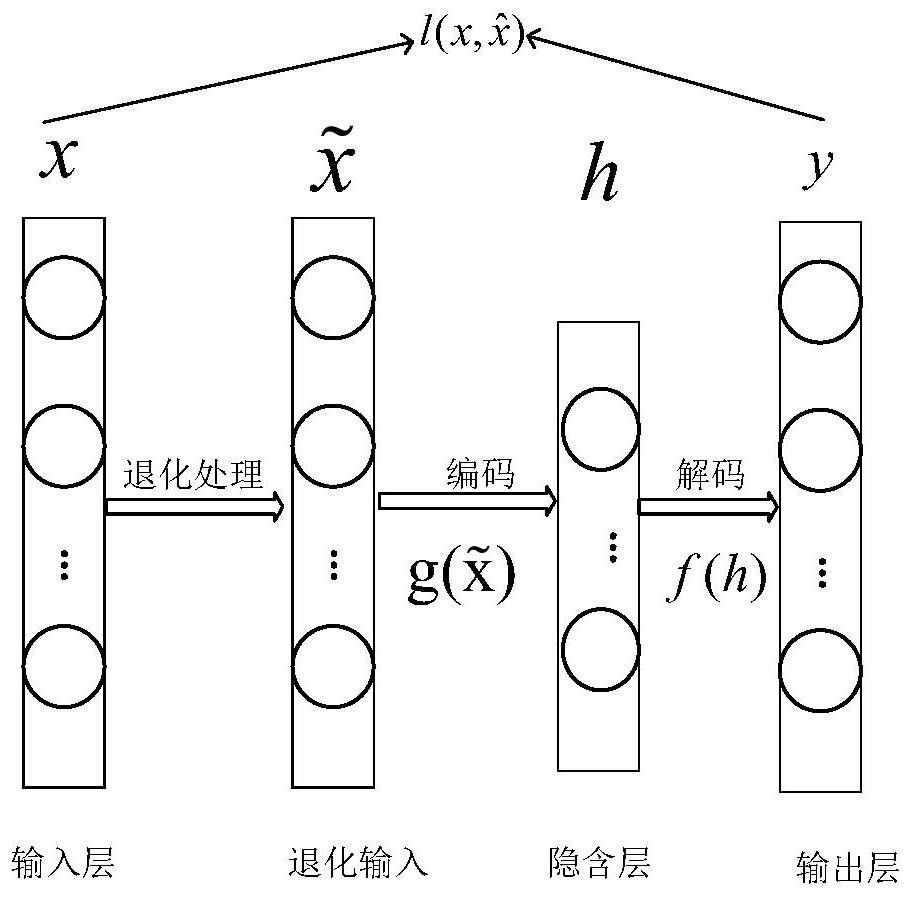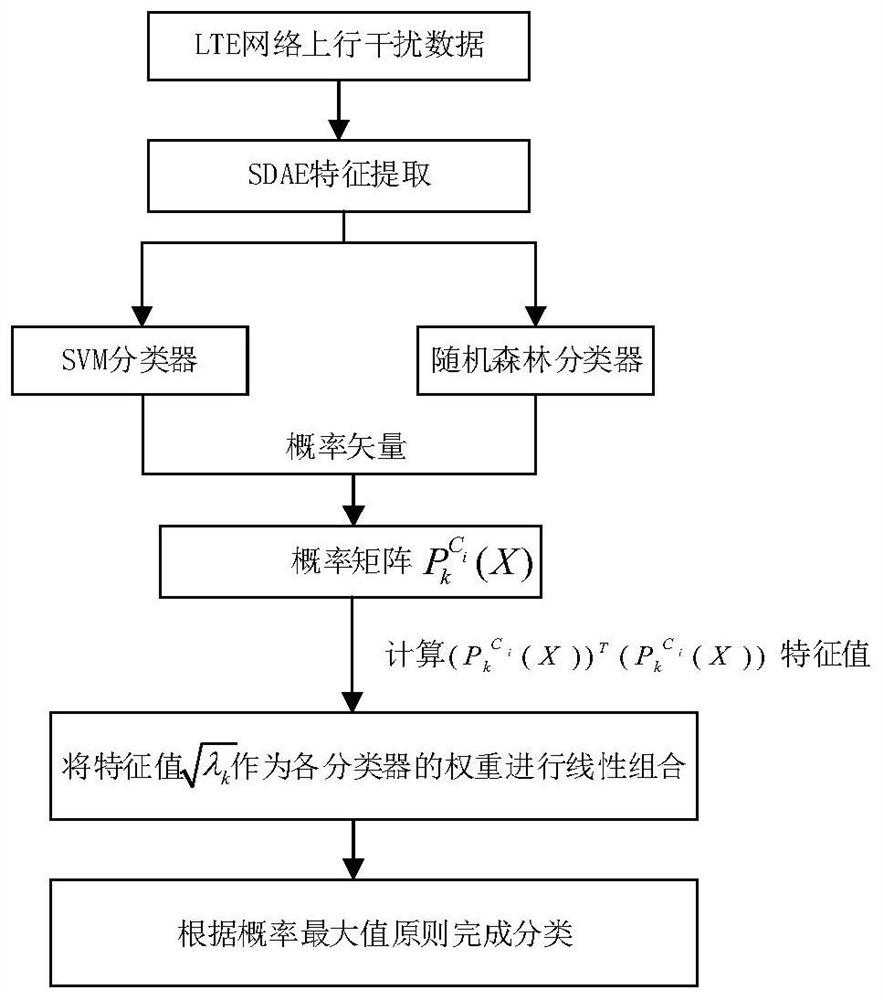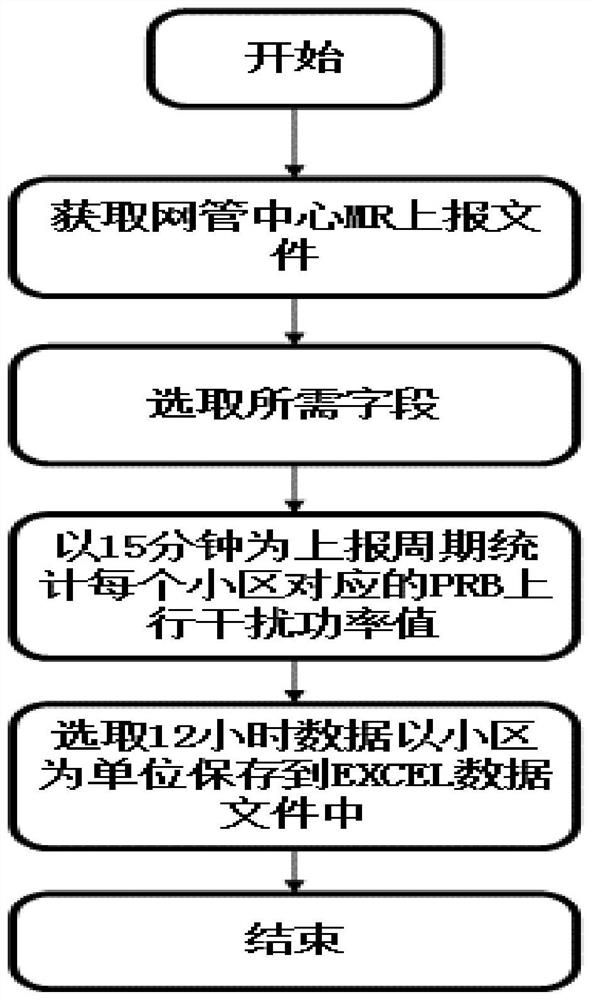LTE network uplink interference category identification method and system based on classifier
A recognition method and classifier technology, applied in the transmission system, neural learning method, character and pattern recognition, etc., can solve the problems of unsatisfactory classification accuracy of the model, and the algorithm is easy to fall into the local optimal value, so as to achieve the effect of improving the accuracy
- Summary
- Abstract
- Description
- Claims
- Application Information
AI Technical Summary
Problems solved by technology
Method used
Image
Examples
Embodiment 1
[0034] This embodiment provides a classifier-based LTE network uplink interference category identification method;
[0035] A classifier-based identification method for LTE network uplink interference category, including:
[0036] S101: Obtain LTE network uplink data to be classified;
[0037] S102: Perform feature extraction on the LTE network uplink data to be classified;
[0038] S103: Classify the extracted features using different classifiers to obtain different classification results;
[0039] S104: Perform weighted summation on different classification results to obtain a final classification result.
[0040] Further, said S101: Acquire LTE network uplink data to be classified; specifically include:
[0041] Obtain data indicators such as the uplink interference power value at the granularity of the PRB (Physical Resource Block, Physical Resource Block) to be classified, the label of the primary serving cell, and / or the reporting time.
[0042] Further, said S102: p...
Embodiment 2
[0131] This embodiment provides a classifier-based LTE network uplink interference category identification system;
[0132] Classifier-based LTE network uplink interference category identification system, including:
[0133] An acquisition module configured to: acquire LTE network uplink data to be classified;
[0134] A feature extraction module, which is configured to: perform feature extraction on the LTE network uplink data to be classified;
[0135] A classification module configured to: classify the extracted features using different classifiers to obtain different classification results;
[0136] The weighted summation module is configured to: perform weighted summation on different classification results to obtain a final classification result.
[0137] It should be noted here that the above acquisition module, feature extraction module, classification module and weighted summation module correspond to steps S101 to S104 in Embodiment 1, and the examples and applicat...
Embodiment 3
[0141] This embodiment also provides an electronic device, including: one or more processors, one or more memories, and one or more computer programs; wherein, the processor is connected to the memory, and the one or more computer programs are programmed Stored in the memory, when the electronic device is running, the processor executes one or more computer programs stored in the memory, so that the electronic device executes the method described in Embodiment 1 above.
[0142] It should be understood that in this embodiment, the processor can be a central processing unit CPU, and the processor can also be other general-purpose processors, digital signal processors DSP, application specific integrated circuits ASIC, off-the-shelf programmable gate array FPGA or other programmable logic devices , discrete gate or transistor logic devices, discrete hardware components, etc. A general-purpose processor may be a microprocessor, or the processor may be any conventional processor, o...
PUM
 Login to View More
Login to View More Abstract
Description
Claims
Application Information
 Login to View More
Login to View More - R&D
- Intellectual Property
- Life Sciences
- Materials
- Tech Scout
- Unparalleled Data Quality
- Higher Quality Content
- 60% Fewer Hallucinations
Browse by: Latest US Patents, China's latest patents, Technical Efficacy Thesaurus, Application Domain, Technology Topic, Popular Technical Reports.
© 2025 PatSnap. All rights reserved.Legal|Privacy policy|Modern Slavery Act Transparency Statement|Sitemap|About US| Contact US: help@patsnap.com



